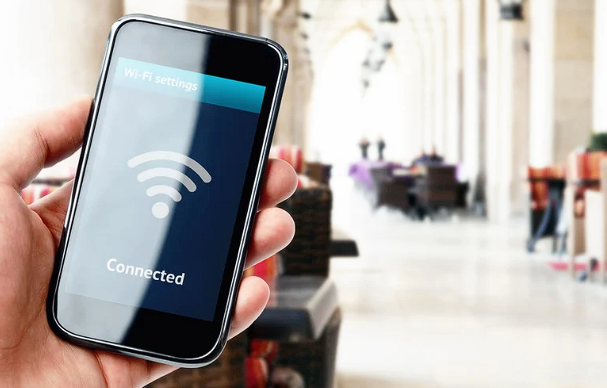Introduction: Why Free Wi-Fi Isn’t Really Free
We’ve all been there — sitting in a café, airport, or hotel lobby, grateful for that free Wi-Fi connection. It feels convenient, quick, and harmless. But here’s the truth: public Wi-Fi often comes with hidden dangers you don’t see. Hackers love these open networks because they make it easy to steal data from unsuspecting users. Let’s uncover the hidden dangers of public Wi-Fi networks so you know exactly what risks you’re facing.
1. Man-in-the-Middle Attacks (MITM)
One of the most common threats on public Wi-Fi is the man-in-the-middle attack. It works just like it sounds — hackers secretly position themselves between you and the website you’re visiting.
Why It’s Dangerous
- Hackers can intercept your emails, chats, or even banking details.
- You might not even realize it’s happening.
- It can lead to stolen identities and financial loss.
2. Fake Wi-Fi Hotspots
Sometimes hackers create their own hotspots with names like “Free Airport Wi-Fi” or “CoffeeShop_WiFi.” These look legitimate, but they’re traps.
How They Work
- You connect to the fake hotspot.
- Every bit of data you send goes straight to the hacker.
- Logins, passwords, and personal messages are all exposed.
Pro tip: Always double-check the official Wi-Fi name with staff before connecting.
3. Data Theft Through Packet Sniffing
Packet sniffing is a technique hackers use to capture unencrypted data moving through the network.
What They Can Steal
- Login credentials
- Credit card numbers
- Personal files and emails
Without encryption, your online activity is like postcards — anyone can read them.
4. Malware Distribution
Public Wi-Fi networks can also be used to spread malware. Hackers can inject malicious software into your device while you’re connected.
Consequences of Malware
- Device slowdowns and crashes
- Unauthorized access to files
- Ransomware locking you out of your own data
5. Session Hijacking
Ever stay logged into apps like Facebook or Gmail? Hackers can hijack those sessions on public Wi-Fi.
Why It Matters
- They don’t even need your password.
- Hijacked sessions let hackers impersonate you.
- This can lead to embarrassing or harmful misuse of your accounts.
6. Eavesdropping on Unencrypted Connections
If you’re visiting websites without HTTPS, you’re wide open to prying eyes. Hackers can read your messages, see what sites you’re visiting, and even alter the content you receive.
The Simple Fix
Always check for the padlock symbol (HTTPS) in your browser. Without it, don’t enter personal details.
7. Identity Theft
All of these dangers add up to one of the biggest risks of all: identity theft. Once hackers have enough of your personal information, they can pretend to be you.
Potential Damage
- Opening credit cards in your name
- Accessing bank accounts
- Damaging your reputation online
8. Corporate Espionage Risks
If you’re working remotely and connecting to public Wi-Fi, you might put your company’s sensitive data at risk too. Hackers can steal business emails, confidential files, or trade secrets.
Who’s Most at Risk
- Remote workers
- Business travelers
- Freelancers handling client data
9. Overconfidence in “Secure” Public Wi-Fi
Even if a hotspot has a password, it doesn’t mean it’s safe. Hackers on the same network can still target you.
False Sense of Security
- Password-protected networks can be compromised.
- WPA2 networks are outdated compared to WPA3.
- Users often assume “secure” means “hack-proof.”
Conclusion: Stay Aware of the Hidden Dangers of Public Wi-Fi Networks
Public Wi-Fi feels convenient, but it hides real dangers. From man-in-the-middle attacks to malware distribution, hackers use these networks to steal data and identities. The hidden dangers of public Wi-Fi networks are real — but awareness is your first line of defense. Combine smart habits with tools like VPNs and HTTPS browsing, and you’ll turn risky hotspots into safer connections. Remember: every free Wi-Fi session has a cost — unless you protect yourself.
FAQ
- Can hackers really see everything I do on public Wi-Fi?
Yes, if your connection isn’t encrypted, they can intercept and view your traffic. - Is a password-protected public Wi-Fi safe?
Not entirely. Other users on the same network could still pose a risk. - What’s the most common attack on public Wi-Fi?
Man-in-the-middle attacks, where hackers intercept data between you and the site. - Can public Wi-Fi give me malware?
Yes. Hackers can inject malicious software into devices connected to unsecured networks. - How can I safely use public Wi-Fi?
Use a VPN, stick to HTTPS sites, and avoid logging into sensitive accounts.

